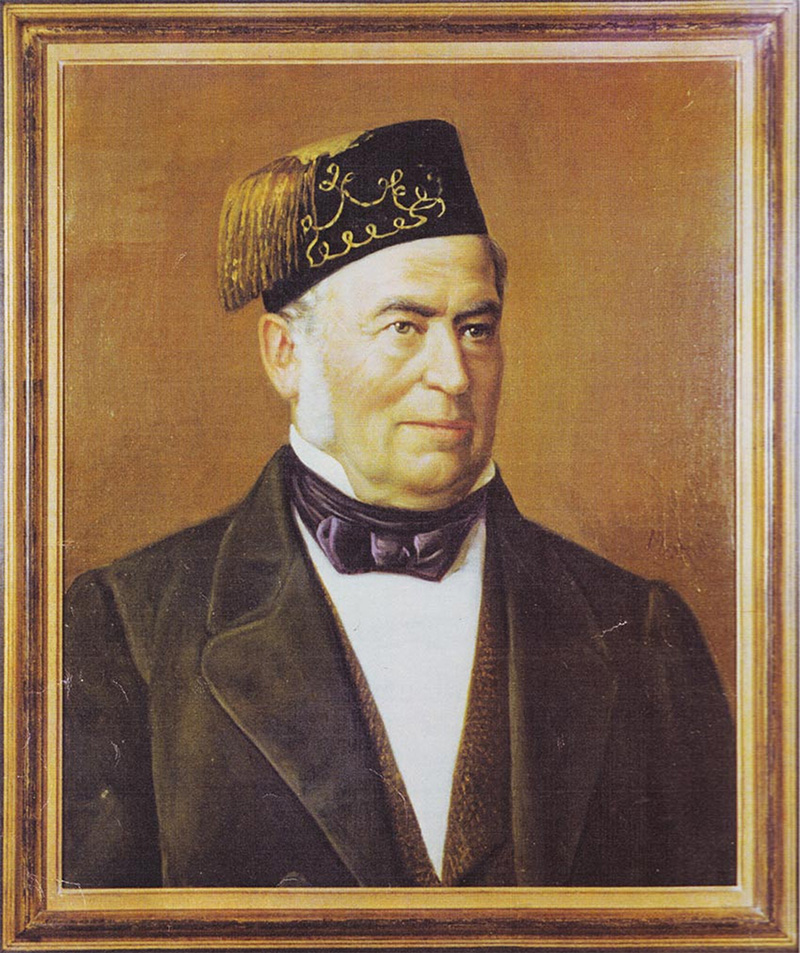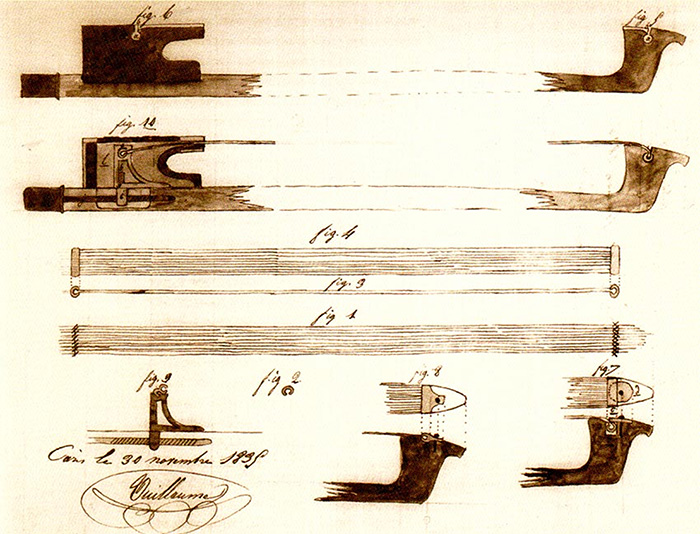|

Born in Mirecourt, Jean-Baptiste Vuillaume (1798-1875) worked with his father Claude François Vuillaume IV until the age of 19 and moved to Paris to apprentice with Chanot for two years to further his training, after which Vuillaume partnered with N. A. Lété to work together in a workshop. Vuillaume was very much aware of the Cremonese instruments, making his talent blossom, and went on to win the silver medal at a competition in Paris at the age of 25. In addition, this was when he started to realise the importance of bows, acknowledging François Xavier Tourte as a master maker, and spread his social circle with violin and bow makers, dealers, collectors and musicians.
When Vuillaume was the age of 27 and 28, Jean Pierre Marie Persoit and the great bow master Dominique Peccatte joined his workshop, respectively, and at the age of 29, Vuillaume set up his own workshop in the 1st arrondissement of Paris, with many instrument and bow maker apprentices, marking the beginning of his career as a renowned dealer in France.
Although Vuillaume did not make any bows himself, he trained some of the finest bow makers to go down in history, including Joseph Henry, Jean “Grand” Adam, Nicolas Rémy Maire, Pierre Simon, Nicolas Maline I, Jean-Joseph Martin, Claude Joseph Fonclause, Charles Claude Husson, and François Nicolas Voirin, whose different styles have originated from Vuillaume's innovative ideas. In addition, violin makers who worked as apprentices to Vuillaume were to become some of the leading master makers in France. Through all the fine Cremonese instruments that he was able to encounter as a dealer, he gained more knowledge on violin making, leading him to receive another silver medal at a competition in Paris at the age of 31.
 From the age of 36, he became friends with the renowned violinist Paganini, from whom Vuillaume received much inspiration. Thanks to this friendship, not only did Vuillaume produce many copies of Guarnerius 'Il Cannone', which Paganini was playing on at the time, but also produced many innovations, such as hollow steal bows and self-rehairing bows, both of which were great ideas in theory but did not catch on due to their lack of usability in the long term.
From the age of 36, he became friends with the renowned violinist Paganini, from whom Vuillaume received much inspiration. Thanks to this friendship, not only did Vuillaume produce many copies of Guarnerius 'Il Cannone', which Paganini was playing on at the time, but also produced many innovations, such as hollow steal bows and self-rehairing bows, both of which were great ideas in theory but did not catch on due to their lack of usability in the long term.
But his passion and dedication towards violin making never ceased and he went on to finally receive gold medals at the age of 41 and 46, acquiring the skills in producing some of the finest copies of Stradivarius and Guarnerius, which are comparable to fine Italian violins and are highly valued still to this day.
Despite his unsuccessful innovations in the past, Vuillaume continued his research and invented his own style of frogs with rounded edges and ferrules known as the ‘Vuillaume Style’ at the age of 47. In some of those frogs, he inserted small pictures of himself or musicians behind the pearl eye, which are still being sought after by musicians and collectors today.
In 1851, two quartets of instruments Vuillaume made for an exhibition in London received judeges' awards.
Not only was the ribbon of the Ordre Royale de la Légion D'honneur bestowed upon him by the French government for his artistic accomplishments, he was also honoured by other Royal Families, which symbolised his success as a prolific dealer and a businessman.
The violin introduced here was made in 1862, when Vuillaume was 64, and is a copy of the Stradivarius violin owned by the notable violinist Jean-Delphin Alard, to whom Vuillaume dedicated this violin. This is one of the most beautiful works of Vuillaume that still exists today.
| |

